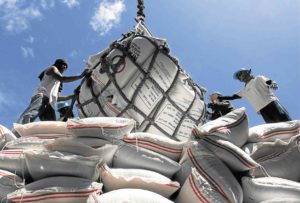The Department of Agriculture (DA) is bringing urban gardening closer to homes as it formally launched its urban aquaponics program early this week, which will provide interested municipalities with the proper equipment to start an integrated fish and vegetable garden in their respective communities.
Its attached agency, the Bureau of Fisheries and Aquatic Resources (BFAR), said it was ready to distribute 15 small-scale units, 10 large-scale fiberglass units and 50 large-scale canvas units for urban aquaponics to urban communities within Metro Manila to make food production more sustainable especially with the persistence of the new coronavirus pandemic.
Hydroponics is a technology that allows fish and vegetables to grow together in an integrated system. Even without soil, plants such as lettuce, spinach and other herbs can be grown through this method by allowing them to absorb the mineral nutrient solutions in the water. In turn, fish variants such as tilapia and catfish can be cultured beneath.
The distribution will follow an institutional arrangement through a memorandum of agreement among agencies and organized groups identified as recipients of the project to ensure that the equipment will be used and sustained.
“We want an agriculture that is modern; we want an agriculture that is technology-based; we want to eradicate subsistence agriculture; we want an agriculture that is inclusive and market-oriented,” Agriculture Secretary William Dar said.
According to the BFAR, the small unit for hydroponics would take up a square meter of space but could already yield 50 to 75 pieces of catfish and 54 pieces of lettuce amounting to at least P4,800 per cropping.
The large model is as profitable. With width three times the size of the small unit, it can produce 120 to 300 pieces of catfish and 344 pieces of lettuce for a total of P112,572 in gross sales if sold.
Growing leaf vegetables can take up a month or two, while aquaculture can take about four months.
The cost of production for these models are pegged at P36,000 and P120,000, respectively.
Currently, the DA has five sets of solar energy and electricity hybrid-powered models of urban aquaponics, two of which are being used by its central office in Quezon City and by the Philippine Coconut Authority.BFAR said the remaining sets would also be made available to interested individuals and communities in the coming months. These models are also being replicated around the country through the agency’s regional field offices.


